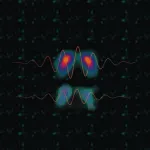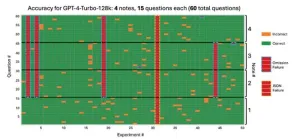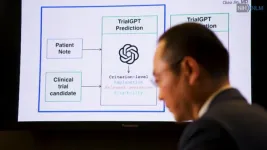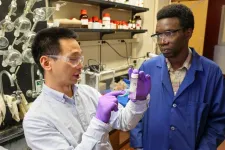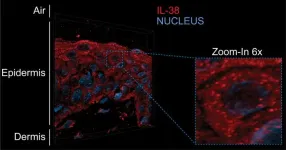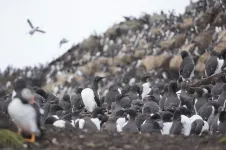How 70% of the Mediterranean Sea was lost 5.5 million years ago
2024-11-18
(Press-News.org)
Mediterranean Sea dropped during the Messinian Salinity Crisis – a major geological event that transformed the Mediterranean into a gigantic salt basin between 5.97 and 5.33 million years ago2.
Until now, the process by which a million cubic kilometres of salt accumulated in the Mediterranean basin over such a short period of time remained unknown. Thanks to analysis of the chlorine isotopes3 contained in salt extracted from the Mediterranean seabed, scientists have been able to identify the two phases of this extreme evaporation event. During the first phase, lasting approximately 35 thousand years, salt deposition occurred only in the eastern Mediterranean, triggered by the restriction of Mediterranean outflow to the Atlantic, in an otherwise brine-filled Mediterranean basin. During the second phase, salt accumulation occurred across the entire Mediterranean, driven by a rapid (< 10 thousand years) evaporative drawdown event during which sea-level dropped 1.7-2.1 km and ~0.85 km in the eastern and western Mediterranean, respectively. As a result, the Mediterranean Basin lost up to 70% of its water volume.
This spectacular fall in sea level is thought to have had consequences for both terrestrial fauna and the Mediterranean landscape – triggering localised volcanic eruptions due to unloading of Earth's crust, as well as generating global climatic effects due to the huge depression caused by the sea-level drawdown.
These results, published in Nature Communications on November 18, provide a better understanding of past extreme geological phenomena, the evolution of the Mediterranean region and successive global repercussions.
This work was supported by the European Union and the CNRS.
Notes :
From the French research institute Institut de physique du globe de Paris (CNRS/Université Paris Cité/Institut de physique du globe de Paris).
This exceptional event covered the floor of the Mediterranean Sea with a layer of salt up to 3 km thick. Understanding the causes, consequences and environmental changes undergone by the Mediterranean region in response to the Messinian Salinity Crisis is a challenge that has mobilised the scientific community for decades.
Analysis of the two stable chlorine isotopes (³⁷Cl and ³⁵Cl) made it possible to estimate the rate of salt accumulation and detect the drop in sea level. END
[Attachments] See images for this press release:

ELSE PRESS RELEASES FROM THIS DATE:
2024-11-18
A new study, focused on a remote region of the Peruvian Andes where the waters of the Amazon originate, carries lessons for hydropower operators and farming communities worldwide: collaborating on sustainable land management is the best decision they can make for the long-term viability of their businesses and livelihoods. It also opens opportunities for restoration of degraded ecosystems. Research from the Stanford-based Natural Capital Project (NatCap) in Communications - Earth & the Environment integrates hydropower operations with ...
2024-11-18
Researchers from the Champalimaud Foundation shed light on the puzzling relationship between dopamine and rest tremor in Parkinson’s disease, finding that preserved dopamine in certain brain regions may actually contribute to tremor symptoms, challenging common beliefs.
Parkinson's disease (PD) is a progressive neurological disorder known for its characteristic motor symptoms: tremor, rigidity, and slowness of movement. Among these, rest tremor—a shaking that occurs when muscles are relaxed—is one of the most recognisable yet least understood.
A new study from the Champalimaud ...
2024-11-18
New York, NY [November 18, 2024]—A study by researchers at the Icahn School of Medicine at Mount Sinai has identified strategies for using large language models (LLMs), a type of artificial intelligence (AI), in health systems while maintaining cost efficiency and performance.
The findings, published in the November 18 online issue of npj Digital Medicine [DOI: 10.1038/s41746-024-01315-1], provide insights into how health systems can leverage advanced AI tools to automate tasks efficiently, saving time and reducing operational costs while ensuring these models remain ...
2024-11-18
Researchers from the National Institutes of Health (NIH) have developed an artificial intelligence (AI) algorithm to help speed up the process of matching potential volunteers to relevant clinical research trials listed on ClinicalTrials.gov. A study published in Nature Communications found that the AI algorithm, called TrialGPT, could successfully identify relevant clinical trials for which a person is eligible and provide a summary that clearly explains how that person meets the criteria for study enrollment. The researchers ...
2024-11-18
As an undergraduate student at Zhejiang University in eastern China, Greg Liu went with some of his classmates on a university-sponsored trip to tour a host of chemical industries within the area.
The tour gave students pursuing degrees in chemical engineering an opportunity to learn more about the manufacturing and production processes of chemicals within China at the time. Liu realized that day exactly what he wanted to do for a career – find ways to alleviate or stop the industry from polluting the environment.
“I realized that this was not going to be the sustainable way of our future. Pollution ...
2024-11-18
University of Birmingham News Release
STRICTLY EMBARGOED UNTIL Monday 18th November 2024 8.00am UK/ 3.00am EST
Cocoa or green tea could protect you from the negative effects of fatty foods during mental stress - study
New research has found that a flavanol-rich cocoa drink can protect the body’s vasculature against stress even after eating high-fat food.
Food choices made during periods of stress can influence the effect of stress on cardiovascular health. For example, recent research from the University of Birmingham found that high-fat foods can negatively affect vascular function and oxygen delivery to the brain, meanwhile flavanol compounds found in abundance in cocoa ...
2024-11-18
The mechanisms underlying skin renewal are still poorly understood. Interleukin-38 (IL-38), a protein involved in regulating inflammatory responses, could be a game changer. A team from the University of Geneva (UNIGE) has observed it for the first time in the form of condensates in keratinocytes, the cells of the epidermis. The presence of IL-38 in these aggregates is enhanced close to the skin’s surface exposed to atmospheric oxygen. This process could be linked to the initiation of programmed ...
2024-11-18
A recent analysis reveals striking disparities in the cost and availability of cancer drugs across different regions of the globe, with significant gaps between high- and low-income countries. The findings are published by Wiley online in CANCER, a peer-reviewed journal of the American Cancer Society.
The analysis, which drew on relevant published studies and reviews related to cancer and the availability of cancer treatments, predicts that there will be an estimated 28.4 million new cancer cases worldwide in 2040 alone. In the coming years, cancer incidence is expected to increase most significantly in low-income countries. Cancer mortality ...
2024-11-18
While coronary heart disease and diabetes are often seen in the same patients, a diagnosis of diabetes does not necessarily mean that patients also have coronary heart disease, according to a new study from researchers at Intermountain Health in Salt Lake City.
The Intermountain study found that proactively screening patients with diabetes 1 and 2 for coronary heart disease who have not shown symptoms of heart problems does not improve long-term mortality rates, nor does it lower the chance of them ...
2024-11-18
Different species of seabirds can coexist on small, isolated islands despite eating the same kind of fish. A researcher at Uppsala University has been involved in developing a mathematical model that can be used to better understand how this ecosystem works.
“Our model shows that coexistence occurs naturally when species differ in their ability to catch fish and to efficiently fly long distances to the area where they catch fish,” says Claus Rüffler, Associate Professor of Animal Ecology at Uppsala University.
Seabirds can breed in very large colonies, sometimes consisting of several hundred thousand pairs. Ecologists working ...
LAST 30 PRESS RELEASES:
[Press-News.org] How 70% of the Mediterranean Sea was lost 5.5 million years ago

